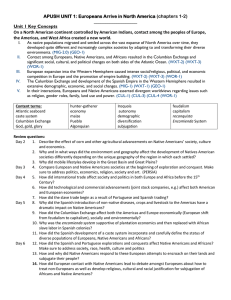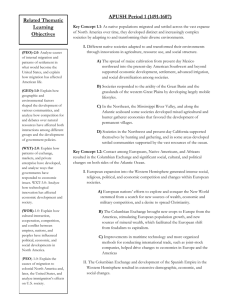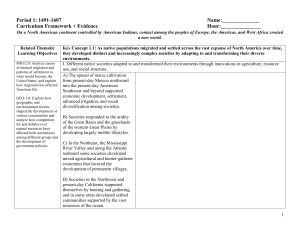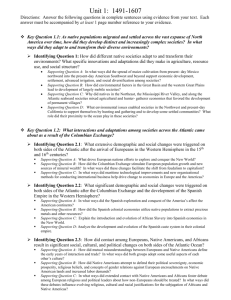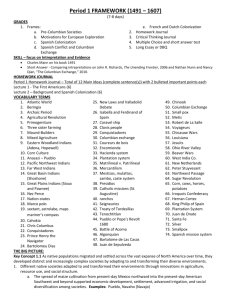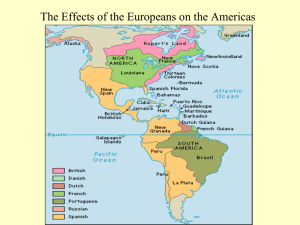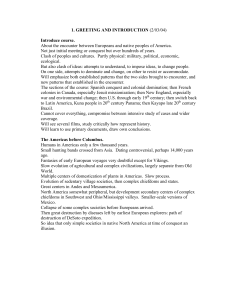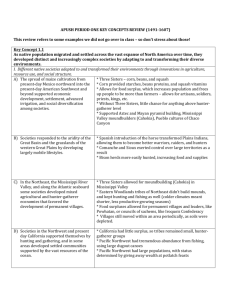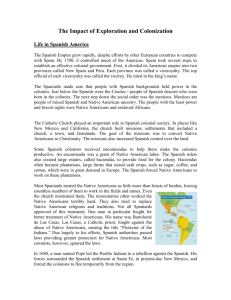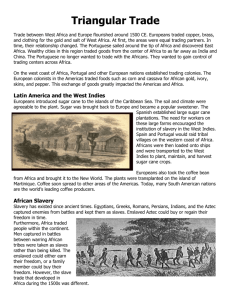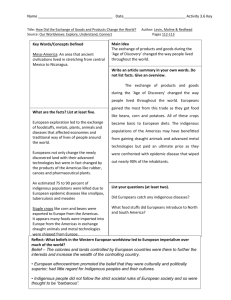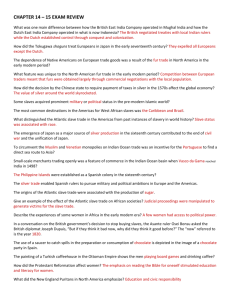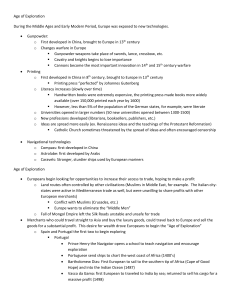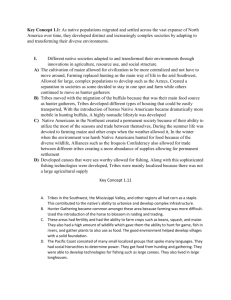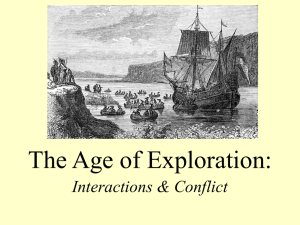Period 1: Age of exploration Study Guide
advertisement
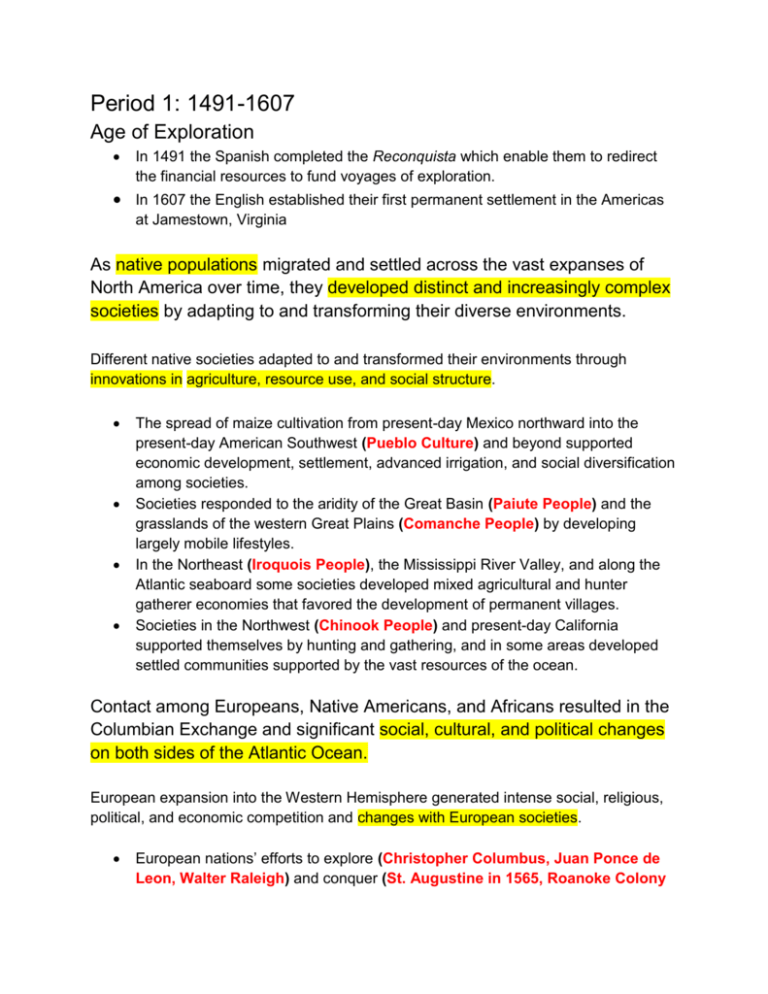
Period 1: 1491-1607 Age of Exploration In 1491 the Spanish completed the Reconquista which enable them to redirect the financial resources to fund voyages of exploration. In 1607 the English established their first permanent settlement in the Americas at Jamestown, Virginia As native populations migrated and settled across the vast expanses of North America over time, they developed distinct and increasingly complex societies by adapting to and transforming their diverse environments. Different native societies adapted to and transformed their environments through innovations in agriculture, resource use, and social structure. The spread of maize cultivation from present-day Mexico northward into the present-day American Southwest (Pueblo Culture) and beyond supported economic development, settlement, advanced irrigation, and social diversification among societies. Societies responded to the aridity of the Great Basin (Paiute People) and the grasslands of the western Great Plains (Comanche People) by developing largely mobile lifestyles. In the Northeast (Iroquois People), the Mississippi River Valley, and along the Atlantic seaboard some societies developed mixed agricultural and hunter gatherer economies that favored the development of permanent villages. Societies in the Northwest (Chinook People) and present-day California supported themselves by hunting and gathering, and in some areas developed settled communities supported by the vast resources of the ocean. Contact among Europeans, Native Americans, and Africans resulted in the Columbian Exchange and significant social, cultural, and political changes on both sides of the Atlantic Ocean. European expansion into the Western Hemisphere generated intense social, religious, political, and economic competition and changes with European societies. European nations’ efforts to explore (Christopher Columbus, Juan Ponce de Leon, Walter Raleigh) and conquer (St. Augustine in 1565, Roanoke Colony in 1586) the New World stemmed from a search for new sources of wealth, economic and military competition, and a desire to spread Christianity. The Columbian Exchange brought new crops to Europe from the Americas, stimulating European population growth, and new sources of mineral wealth, which facilitated the European shift from feudalism to capitalism. Improvements in maritime technology (sextant, astrolabe, caravel) and more organized methods for conducting international trade, such as joint-stock companies, helped drive changes to economies in Europe and the Americas. The Columbia Exchange and development of the Spanish Empire in the Western Hemisphere resulted in extensive demographic, economic, and social changes. Spanish exploration (conquistador) and conquest of the Americas were accompanied and furthered by widespread deadly epidemics (smallpox) that devastated native populations and by the introduction of crops and animals not fund in the Americas. In the encomienda system, Spanish colonial economies marshaled Native American labor to support plantation-based agriculture and extract precious metals and other resources. European traders partnered with some West African groups who practiced slavery to forcibly extract slave labor for the Americas. The Spanish imported enslaved Africans to labor in plantation agriculture and mining. The Spanish developed a caste system (Mestizo, Zambo) that incorporated, and carefully defined the status of, the diverse population of Europeans, Africans, and Native Americans in their empire. In their interactions, Europeans and Native Americans asserted divergent worldviews regarding issues such as religion, gender roles, family, land use, and power. Mutual misunderstandings between Europeans and Native Americans often defined the early years of interaction and trade as each group sought to make sense of the other. Over time, Europeans and Native Americans adopted some useful aspects of each other’s culture. As European encroachments on Native Americans’ lands and demands on the labor increased (Juan de Onate), native peoples sought to defend and maintain their political sovereignty, economic prosperity, religious beliefs (Spanish Mission System), and concepts of gender relations through diplomatic negotiations and military resistance (Pueblo Revolt of 1680). Extended contact with Native Americans and Africans fostered a debate among European religious and political leaders (Juan de Sepulveda, Bartolome de Las Casas) about how non-Europeans should be treated, as well as evolving religious, cultural, and racial justifications for the subjugation of Africans and Native Americans.
